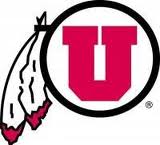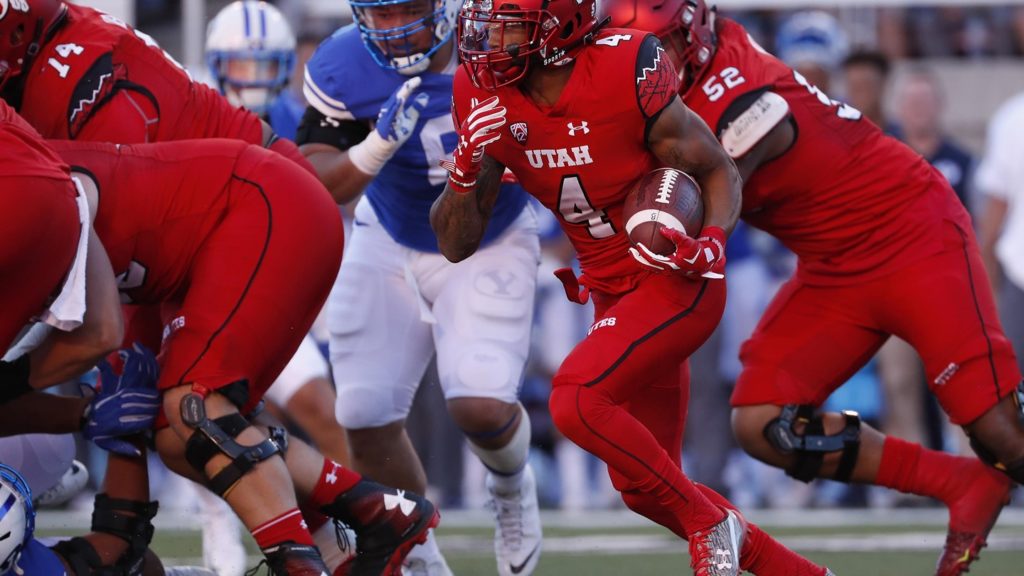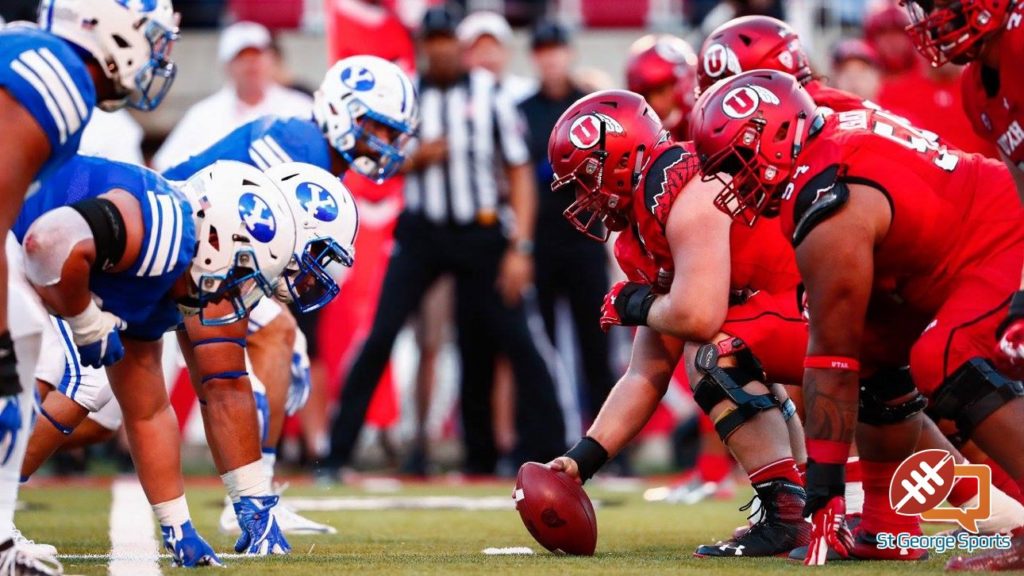
2-0 two games in
What have we learned so far?
Defense great, offense thin
And keep The Holy War
COMMENTARY — One of the great challenges we face in life as we get older (and I freely admit that I am on the downhill side of a century), is that we have to continue to learn, grow, and evolve rather than settling into a death-inducing, albeit comfortable, groove. This is one of many respects in which football mimics life. No football team on any level is currently playing up to its full potential, and the champions will be those that continue to learn, grow, and evolve, while the others slowly die off.
While it’s true that the Utes are 2-0, however, they are not anywhere close to playing up to their true potential. Following are four things we have learned already after only two games:
1. The defense is dominant once again.
I have no interest in beating a dead horse here, so please allow me to quickly recite a few highlights.
 The Ute offense turned the ball over six times (with two of those turnovers essentially putting the Cougars in field goal range immediately), yet the defense only gave up a total of 19 points the entire game.
The Ute offense turned the ball over six times (with two of those turnovers essentially putting the Cougars in field goal range immediately), yet the defense only gave up a total of 19 points the entire game.
Utah’s defense scored as many touchdowns as its offense did against BYU.
The Cougars’ Jamal Williams is widely considered to be one of their most dangerous offensive weapons, and has a real shot to set the school’s all-time rushing record by the end of the season. The Utes held him to a pedestrian 58 yards.
I fully expect this defense to be a championship caliber squad by the end of the season . . . but, unfortunately, the defense remains to be light years ahead of the offense which just can’t keep pace.
2. The offense has potential, but is prone to mistakes, and there are still lots of questions.
The most effective oxen teams are those that are equally yoked, meaning that they match each other in strength and size, and therefore are more effective at pushing the yoke and the load being pulled forward together. If one ox is stronger than the other, it often pulls the yoke to one side and off course and the oxen work against each other instead of with each other.
The common thread between Utah’s 2004 Fiesta Bowl team and 2008 Sugar Bowl team was the offenses on those two teams were equally yoked with the defense, with the squads on both sides of the ball playing at the same high level. Not so in recent years, and thus far this year it doesn’t look much different.

Unlike the lackluster, low-ceiling offenses that have taken the field the past few years, this year’s offense does show some promise and big play ability. However, the offense is still making far too many mistakes, and committing far too many turnovers, to be truly competitive in Pac-12 play.
Quarterback Troy Williams has a good arm, and is very mobile, but his decision-making has been suspect in the first two games. Williams has to stop forcing the ball into heavy coverage resulting in interceptions. Although any interception is costly, they hurt even more when the offense is otherwise in scoring position and the interception essentially takes points off the board that could have easily been within reach with at least a field goal attempt (if not one or more attacks on the end zone).
In a surprising twist on prior years, the Utes may have found a passing attack, but in the process are struggling with the running game. Joe Williams was expected to fill the big shoes left vacant by the graduation of Devontae Booker to the NFL. However, Williams may not even be the starter this Saturday as he was handily outplayed by both Troy McCormick and Zack Moss last week.
The early-week depth chart show MCormick as the No. 1 and Moss at No. 2.
“There will be a competition this week in practice, nothing is set in stone, the depth chart is just a prediction.” Whittingham said. “Zack deserves to get at least an opportunity to vie for the starting job this week.”
The good news is that Utah has a chance to address its offensive woes against San Jose State before embarking on its Pac-12 schedule. It will be interesting to see what adjustments are made, and how the offense performs.
3. It is possible to lose the turnover battle and still win the game.
Head coach Kyle Whittingham consistently preaches that turnovers are the most important statistic in any game, and that you can’t win the game without winning the turnover battle. The Utes had six turnovers, while BYU only had three, yet Utah won the game. I guess last week’s game was the proverbial exception that proves the rule.
Nevertheless, the Utes are not going to be able to win many games while coming out on the wrong side of the turnover battle, so take the anomalous win, but don’t plan on trying to replicate such a feat against Pac-12 teams. This is a problem that has to be fixed, and fixed fast.
4. Utah should play BYU every year.
I have heard Saturday’s game described as sloppy, bad football, painful to watch, etc. I humbly disagree. I loved it and thought it was highly entertaining! The sloppy description is a good example—sloppy joes stand out from hamburgers for the very reason that they are sloppy and unpredictable. Personally, I love an unpredictable football game that continually takes odd and unexpected twists and turns because of what some folks would label sloppy or bad football.

I suspect there were very few true fans on either side of the rivalry that were not on the edge of their seat right up to the very end of the game. Why is that a bad thing? Doesn’t such suspense make the game more interesting?
Growing up with ABC’s Wide World of Sports, I cannot think of The Holy War without connecting it to that famous catchphrase, “the thrill of victory, and the agony of defeat.” The reason the winning team is thrilled and the losing team is in agony is because this game simply means more to the fans (and many players, and even coaches if they are being honest with themselves) than any other regular season game, which feelings are only enhanced by a contest that routinely comes down to the last nail-biting play of the game.
This is one of the nation’s most storied rivalries, and it should continue.
Here’s hoping Utah’s defense continues to dominate and the offense can learn from its past mistakes and markedly improve against San Jose State this Saturday.
Bleeding Red is a sports column written by Dwayne Vance. The opinions expressed are not necessarily those of St. George News.
Email: [email protected]
Twitter: @oldschoolag
Copyright St. George News, SaintGeorgeUtah.com LLC, 2016, all rights reserved.